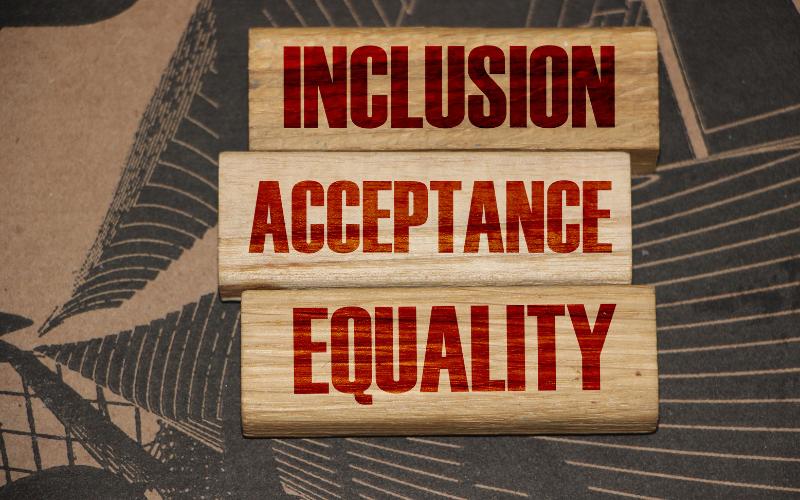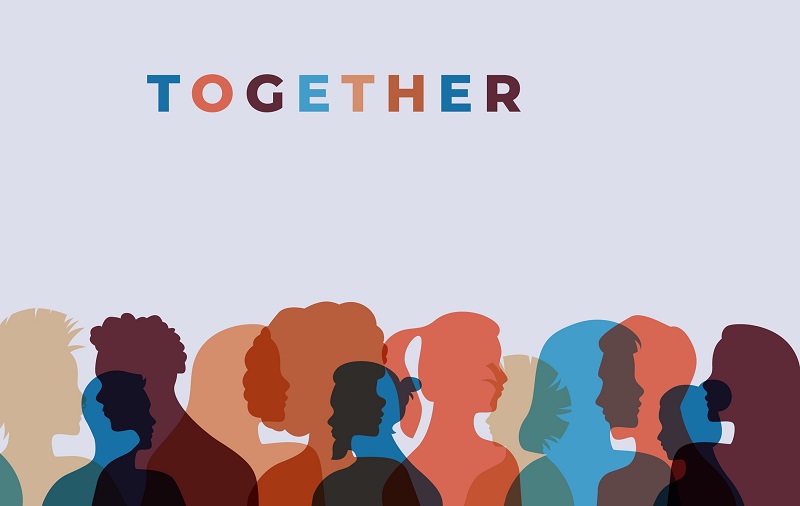Once you’ve established diversity policies in your business, such as blind recruitment and bias training for staff, you can work to improve organisational inclusion in your workplace.
Here are 20 ways to achieve organisational inclusion in your workplace, which you can follow once you’ve covered the 20 fundamental steps to achieving diversity in our previous guide. This second guide is a must in your diversity and inclusion (D&I) journey.
20 ways to achieve organisational inclusion today
1. Is your office temperature “inclusive”?
Many office environments are set to temperatures that suit men. Look at your workforce and see how many people are wrapped up against the cold. There could be employees who suffer from health conditions where the office temperature may affect their productivity and wellbeing.
2. Look at your bathroom signs
Change them to “for those who identify as female/male” to make them more inclusive.
3. Stick your D&I mission statement on the wall
Decorate your office with your D&I mission statements so that everyone, including staff and visitors, can read your company’s commitment to D&I. It could also encourage colleagues to get involved.
4. Don’t have divisive literature on display
If you have a meeting room or a waiting area for visitors, make sure any literature, including magazines, doesn’t alienate or offend certain groups. This could be the first impression stakeholders or potential employees have of your business and its values, so it’s important to display the right reading material.
5. Allocate space for nursing mothers
Accommodating the needs of working mothers, such as those who need a private space to pump breast milk, will help them feel included and valued. A spare meeting room could suffice, even if it’s only used for certain times in the day. For businesses operating remotely, understanding that nursing women may go offline multiple times during the day to perform this function is important, and there should be no judgement.
6. Ensure team-bonding activities aren’t always in the evening
For employees with caregiving responsibilities, team bonding after hours may not work. Consider hosting activities during the working day, such as before the Christmas break when work slows down.
7. Make some workplace socialising alcohol-free
Put on some physical activities to help with workplace bonding which will be more inclusive for employees that don’t drink for health and/or religious reasons.
8. Refresh your team’s page
This is one of the first things job candidates look at, so ensure there’s a diverse representation of your workforce for them to see on your company website. It could be a good idea to include any charitable and social impact work some of these leaders do in their spare time, including their social interests and role models.
9. Invite your staff to blog
Allowing your staff, especially those from underrepresented groups, to share their honest insights about working for your organisation could attract diverse recruitment. It could also be an opportunity to invite interested staff to develop their passion for writing, which is a great upskilling opportunity to offer.
10. Set up D&I speaking events
Invite a speaker from the D&I community, whether a professional in the space or a business leader from a BAME background who wants to share their experiences.
11. Share meeting agendas ahead of time
This could encourage more introverted employees to speak up at meetings if they have the time to prepare responses beforehand.
12. Ask everyone to contribute at meetings
At the end of the meeting, try asking each attendant for their thoughts and comments, but make it clear they can pass. It’s essential you don’t make this an intimidating experience.
13. Manage interruptions
If someone is interrupted during a meeting, try to pause the conversation and allow that person the opportunity to speak. Studies show that women are more likely to be interrupted during meetings than men.
14. Make your parental leave policy clear
Promoting your offering and even extending the number of days allowed could increase staff retention.
15. Offer “best and final” salaries
As men are more likely to negotiate salaries than women, it’s best to offer all candidates the best and final salary offers. This could ensure people get paid fairly across the genders, which could help close the gender pay gap.
16. Ensure HR staff hold “office hours”
Having a set period of time per day where employees can approach HR staff without booking an appointment could bring more workplace issues to the fore, enabling them to be dealt with quicker.
17. Sponsor a D&I event
This could grow your organisation’s knowledge of D&I, make underrepresented groups in the workforce feel valued, and be great PR for your brand and could bring forth commercial opportunities.
18. Sponsor social enterprises
This shows that your organisation holds values that go beyond turning profits. Try approaching your workforce with various social enterprises to support, and see which initiative they think is most worthwhile.
19. Have a D&I focused performance review system
Make D&I one of the KPIs for managers. Assess how much effort they are putting into conducting blind recruitment and structuring candidate interviews to prevent bias from occurring. Are they trying to build a more diverse talent pipeline for the organisation?
20. Ensure that leadership “buys into inclusion”
The above efforts are pointless if senior decision-makers don’t take part. Encourage leadership to get involved in the inclusion discussion by sharing D&I content on Slack groups or LinkedIn. Make inclusion a topic that’s discussed regularly in meetings, or employees will think it’s lip service and nothing more.









